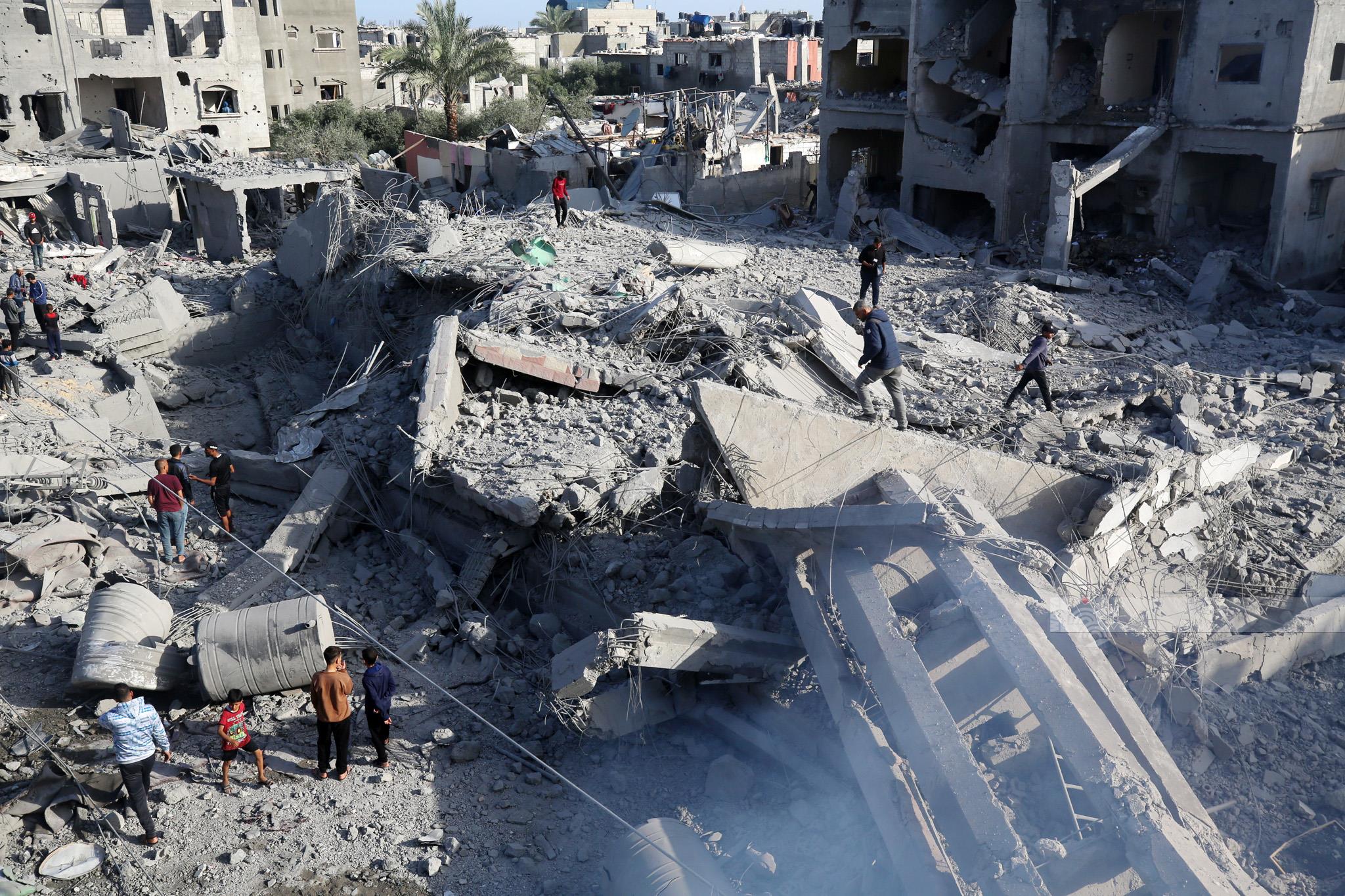A sticking point in the proposal was Hamas’s demand for written commitments from Qatar, Egypt and the United States that the second phase of the deal would continue without a time limit, something that Israel opposed, the sources told Axios.
CIA director Bill Burns is reportedly returning to Qatar this week to jumpstart negotiations over a captives release and ceasefire deal in the Gaza Strip as Israel’s brutal war entered its tenth month.
Two Israeli sources told Axios on Saturday that Burns is scheduled to meet Qatar’s Prime Minister and Minister of Foreign Affairs Sheikh Mohammed bin Abdulrahman Al Thani and the head of Egyptian intelligence, Abbas Kamel.
The CIA declined Axios’ request for a comment and Qatar has not publicly commented on the reported meeting.
The latest development comes after Israel sent its negotiators to the Gulf state over the weekend for a fresh round of talks after Hamas sent mediators, Qatar and Egypt, an amended proposal on Wednesday.
A key point in the proposal was Hamas’s demand for written commitments from Qatar, Egypt and the United States that the second phase of the deal would continue without a time limit, something that Israel opposed, the sources told Axios.
The original language of the proposal stipulated that Qatar, Egypt and the U.S. would “make every effort” that a ceasefire takes place as long as the negotiations continue while ensuring that they only end in an agreement.
In its latest proposal, Hamas reportedly changed the wording from “make every effort” to “ensure”. U.S. officials told Axios that the American side offered to use the word “undertake” instead.
Meanwhile, U.S. and Israeli officials cited by the American news outlet said the current differences can be hashed out. An Israeli official also said that an “expert level” delegation from Tel Aviv will return to Doha this week to discuss the implementation issues.
The latest talks are taking place under a state of cautious optimism, especially as negotiations have stalled since the expiration of last year’s week-long truce, brokered by Qatar and Egypt.
The truce resulted in the release of 109 Israeli captives out of 251 held by Hamas and 240 Palestinians from Israeli prisons – some of whom have since been re-arrested by Israeli forces.
Israel has long rejected Hamas’s demand for a complete ceasefire in the Gaza Strip while vowing to eliminate the Palestinian movement—an objective that many analysts say is not realistic.
Israel has also used the war, widely described as a genocide, as the pretext to release the captives, despite killing around 42 of them through the non-stop attacks and prevention of entry of basic necessities.
According to an AFP tally, 116 captives are still in the Gaza Strip.
The war entered its tenth month on Sunday, with more than 38,000 people killed, mainly women and children, in the Gaza Strip.
The war, coupled with a complete Israeli blockade, has pushed the coastal enclave into a dire humanitarian crisis, with alarming levels of starvation on the rise.
The war displaced at least 1.9 million people out of the Gaza Strip’s population of 2.1 million – down from the United Nations’ initial estimate of 2.3 million, following the deaths and exodus of people.
According to the Border Authority, about 110,000 Palestinians have been forced to exit Gaza through Egypt via the shared Rafah Crossing, which has been out of service following Israel’s invasion on May 6.
Last week, Qatar’s Amir Sheikh Tamim bin Hamad Al-Thani stressed the need to reach a ceasefire deal “as soon as possible”.
“We seek to end the war in Gaza through negotiations and to return the hostages as soon as possible,” the Qatari leader said, as quoted by Al Jazeera. “We hope to end the war and achieve the aspirations of the Palestinian people for an independent state.”







